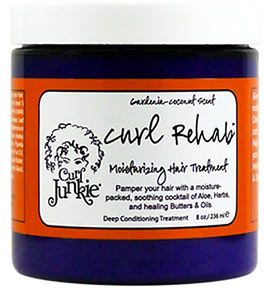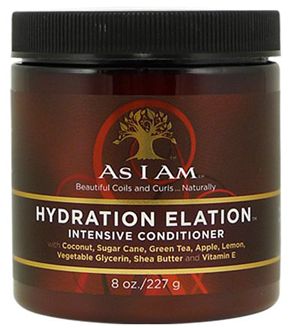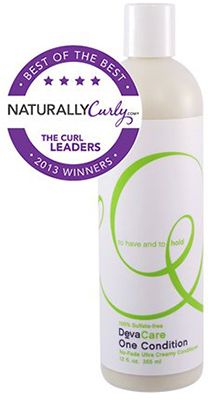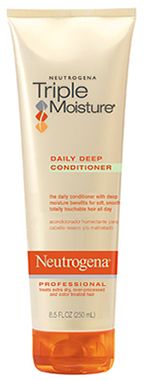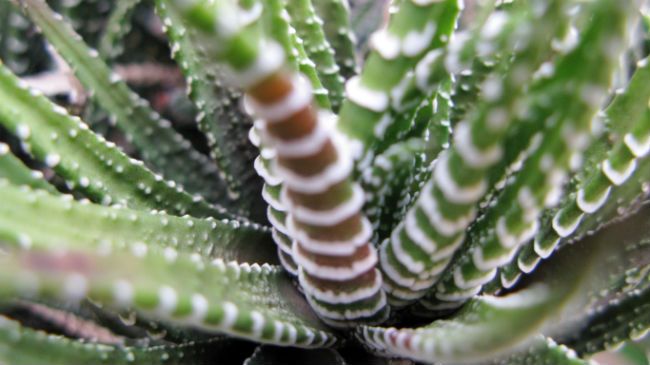Search Results: Sabrina Perkins

 Are you addicted to slip? You know…slip! Our hair tends to be dry and the older it gets–or further from wash day–the dryer it gets. Curly or coily hair tends to curl or coil around itself and create tangles or knots (yes, knots”> when dry. Many of us are always on the hunt for products that will properly coat the knots and tangles and allow them to glide through with a comb or our fingers easily and without much friction. Slip just describes how slippery a product is and that’s usually conditioners with some natural oils.
Are you addicted to slip? You know…slip! Our hair tends to be dry and the older it gets–or further from wash day–the dryer it gets. Curly or coily hair tends to curl or coil around itself and create tangles or knots (yes, knots”> when dry. Many of us are always on the hunt for products that will properly coat the knots and tangles and allow them to glide through with a comb or our fingers easily and without much friction. Slip just describes how slippery a product is and that’s usually conditioners with some natural oils.
Slip is a curlies best friend but what makes up the BEST slip? There’s an actual science to it and it’s more than what’s the most popular or the most expensive. It’s what’s in the makeup of the product. Here are a list of ingredients we see every day on the back of bottle and jar and as we skim over them do we really know what they do and how they give us the best slip possible? Now, it’s time to see what makes all those products work so well.
Fatty Alcohols
Hopefully by now you know that not all alcohols are bad for your tresses or can cause dryness or frizz. Fatty alcohols are larger alcohols and are characteristically derived from natural sources. Because of their larger carbon count they tend to be oilier or referred to as “fatty”. They are often used in hair and body products as an emollient and make the hair smooth by forcing the cuticle to lie flat and have a smoother surface. They also are used in some hair products as thickeners.
Popular fatty alcohols and which popular products you can find them in:
Stearyl Alcohol
An emollient derived from stearic acid which is derived from vegetable fatty acids. Mop Top Daily Conditioner is great at restoring moisture to dry, frizzy hair.
Cetearyl Alcohol
A blend of natural emulsifiers derived from vegetable or corn oil. Curl Junkie Daily Fix Cleansing Conditionercleanses without drying or stripping the hair.
Cetyl Alcohol
Derived from vegetable oils like palm or coconut. Ouidad Moisture Lock Leave-In Conditioner locks moisture in and hydrates the hair shaft.
[prodmod]Vegetable-Derived Oils
Vegetable-derived oils or vegetable oils are derived from the fatty portion of a plant but in the hair world they are more known as carrier oils. They are often times used to dilute essential oils and although not as potent as essential oils they still can offer therapeutic benefits. They are used in natural creams, butters, lotions, body oils, and hair products to because they are superior moisturizers, strengtheners and nourishments to hair.
Popular vegetable oils and which popular products you can find them in:
Olive oil
An oil pressed from ripe olives and doesn’t contain chemicals. Helps in preventing hair loss and contains antioxidants that promote a healthy hair and scalp. It also strengthens and soothes out the hair cuticle.Aubrey Organics White Camellia Conditioner is rich in vitamins and will deep-condition and protect your curls.
Jojoba oil
Considered an oil but really a liquid wax that’s extracted from the seeds of a shrub in the Southwest region of the United States. Great for all hair types and promotes hair growth. Very similar to sebum so it’s naturally safe to apply to hair and skin and it’s a great moisturizer.
Curl Junkie Beauticurls Argan & Olive Oil Daily Hair Conditioner is great for detangling and moisturizing and perfect for all hair types.
Avocado oil
An edible oil pressed from the avocado or the king of the hair fruits. It’s full of vitamins like A, E and D and potassium and is amazing for deep conditioning treatments.
Jessicurl Aloeba Daily Conditioner allows you to get the just right of moisture without weighing down your curls. Lightweight but a moisture powerhouse.
[prodmod]Vegetable-Derived Butters
Very similar to vegetable oils but the butters are fixed vegetable fats that are solid at ordinary or regular temperatures but usually melt at or below body temperature.
Shea Butter
Off-white fatty substance from the nuts of the African Shea tree. Not a conditioner but rather a sealer that will seal in the moisture you need to keep your hair moisturized.
SheaMoisture Raw Shea Butter Moisture Retention Shampoo heals dry, damaged hair, and promotes growth and strength.
Cocoa Butter
A pale-yellow fatty substance extracted room the cocoa bean. High in Vitamin E and rich in minerals and has been used in hair conditioners for years. It increases the resilience of hair and adds volume.As I Am DoubleButter Cream Rich Daily Moisturizer is a rich emollient blend of organic oils and vitamins and add softness, shine and manageability.
Mango Butter
The fatty acid that’s cold pressed from the mango seeds and the mango originates from southern Asia. It’s great for nourishing hair and scalp and has moisture sealing properties like most butters.Oyin Handmade Burnt Sugar Pomade contains a massive blend of oils, butters and vegetable waxes is a superior humectant and protectant for your hair while adding high sheen and serious moisture.
[prodmod] Hydrolyzed proteins
Hydrolyzed proteins
Proteins that have been hydrolyzed just mean the chemical compound has been split into smaller units through the hydrolysis process. This makes them easier to be absorbed into the hair shaft. They increase hair’s ability to retain moisture and impart gloss to damaged hair.
Hydrolyzed Silk proteins
Derived from one of the strongest fibers in the world. Forms a crystalline protective barrier around hair strands and improves hair’s elasticity.
Ouidad Curl Recovery Ultra Nourishing Cleansing Oil is a nourishing cleansing oil envelopes the hair shaft to rebuild and protect it from damage and retain moisture and shine.
Hydrolyzed wheat proteins
A protein derived from whole wheat that is moisturizing and conditioning to hair.Curlisto Repair Styling Cream is a leave-in conditioner that will add shine and softness while warding off breakage and dullness.
Hydrolyzed Soy proteins
Water soluble protein derived from soy that strengthens and mends the hair fiber while increasing the hair’s ability to hold moisture. It will add shine and smooth out the hair shaft.U R Curly Tight Curl Enhancer will rejuvenate your curls, coils and waves with this alcohol-free, rich with glycerin and soy protein curl enhancer that will work hard at conditioning your hair.
[prodmod]What biotin can do for your tresses is a well-known secret. It’s always been known but with the surge of natural hair, it’s become a go-to for healthier hair growth among naturals. Biotin is a coenzyme and vitamin B or vitamin H. It’s not just for hair growth, as it’s sometimes used for diabetes and supports the health of skin, nerves, digestive tract, metabolism and cells. It’s found naturally in eggs, brewer’s yeast, cauliflower, and cucumbers.
It’s been called “hair food” since it improves the health and strength of your incoming strands. The commonly suggested dosage is 5000 mcg a day as a supplement, but even if you don’t want to pop a pill or feel you are not getting enough of it in your diet, you can just buy it in your hair products. Check out these top 14 shampoos with biotin.
Organix Biotin and Collagen Shampoo
The biotin in this thick shampoo is coupled with collagen for double benefit. You get the ProVitamin B7 (biotin”> that infuses into your hair strands while the collagen adds volume and dimension to give you thicker, fuller looking hair. When you add the hydrolyzed wheat protein for strength your hair is left fuller, thicker, and healthier.
Rhassoul or ghassoul is a natural, highly-enriched mineral clay from the Atlas mountains of Morocco. The clay has been used by Moroccan women since the eighth century to care for their hair and skin. It’s a popular natural alternative to regular shampoo for cleansing hair and scalp by many naturals today. Rhassoul clay tends to be less expensive than natural hair shampoos, and if you are seeking a happy medium between a shampoo and a co-wash, then products with rhassoul clay may be the answer. What’s even better is the fact that you will find more small businesses (mostly on Etsy”> that create and sell these wonderful hair care and skin care products with rhassoul clay. Who doesn’t like supporting small businesses? Check out these 15 products with rhassoul clay.
Top 15 Products with Rhassoul Clay
Don’t worry, there isn’t a battle of the clays going on. There is just the need to clarify (pun intended”> the differences and the similarities of the two highly popular and highly nutrient-rich clays. They are being used for hair, face and body but is one better than the other? Does one work better in your hair while the other does better for your body? It’s time to learn the differences between the two and how they can give you healthier, lovelier hair and bodies.
Rhassoul Clay
Rhassoul clay or ghassoul clay is a natural mineral clay from the Atlas Mountains of Morocco. It’s been mined and used since the 8th century and has been used by Moroccan women for centuries to care for your skin and hair. The word rhassoul derives from the Arabic word for washing, “Rhassala.” It has an unmatched ability to draw out impurities from the skin and hair and is used for detoxifying, cleansing and reducing dryness. It has a reddish brown color and has been used for soothing scalp ailments such as dandruff and psoriasis.
Benefits
Rhassoul clay is the moisturizer and softener. It reduces dryness in the hair while also removing toxins and product buildup. It improve hair’s elasticity and unblocks your scalp’s pores. It reduces flakiness and aids in detangling and although it cleans like bentonite clay but unlike the detoxifying clay, it leaves your hair soft and moisturized.
Bentonite Clay
Bentonite clay is composed of aged volcanic ash. It’s an impure mud that is incredibly powerful with its ability to produce an electric charge when added to water. With its charge it can remove positively charged products from the hair and body and it absorbs and removes toxins, impurities, heavy metals, and chemicals. Considered a healing clay, bentonite clay has a high concentration of minerals like calcium, iron, magnesium, potassium and silica and there are several type of bentonite clays, each named after its dominant element.
Benefits
Bentonite clay is the detoxifier, the cleanser or the restorer of your hair’s balance. It draws out the impurities and restores your hair’s pH balance and believe it or not it can be used externally or internally according to some. It’s used in many detox and cleansing products and it makes sense that it’s used as a cleansing mask for the hair. It draws out the dirt, impurities, and product buildup on the hair and scalp.
MORE: DIY Bentonite Shampoo Bar
Is one better than the other?
No, not really. Rhassoul clay tends to be pricier than bentonite clay but they have different purposes despite both of them being great for drawing out toxins, product build up and dirt from our hair and scalp. If you need a clay to be highly absorbent than bentonite is the one for you but if you need that extra moisture and softness then rhassoul is the better of the two for you. It matters on what your goal for your hair at that moment and neither is better than the other.
Below I have two videos by DuchessGabrielle, a believer that nature is the best consultant for any issues with your face, body or hair. She gives in-depth information and recipes for clay masks using rhassoul and bentonite clay for your natural hair.
Watch Rhassoul Clay Mask for Natural Hair
Watch Bentonite Clay Mask for Hair
Hand in hair syndrome is a real condition…Ok, maybe not according to the American Medical Association but you get my point. Too many of us love touching, twisting, and playing in our hair. We love the feel the softness and the texture. I love touching my hair and knowing every coil and curl.
Usually when I don’t seal (gasp, did she really admit that?”> I tend to notice my hair feels a tad or severely rough. I always assume it’s not moisturized but honestly speaking, can touch determine the moisture of your tresses? To put it plainly, can hair that’s not soft still be properly moisturized? Naturals value softness as much as they value style. No one wants to have a halo of rough tresses framing her face. It’s the main reason many curlies cringe at the crunch of some gels or mousses that leave your curls, coils, and waves feeling hard, crispy, and uninviting. It’s a symbol of health. You don’t mind your significant other touching your tresses when it’s feeling its best.
There is a difference between dry, damaged hair and what your texture naturally feels like.
Rough hair is an indicator of damaged hair but if you have healthy Type 4 texture, it has its complexities. There will always be shades of gray sprinkled in as our hair is not simply a beautiful creature to understand and manage easily. That means, soft hair is not always healthy or moisturized hair and a rougher texture does not always mean your strands are dry and brittle.
Many using the CGM (Curly Girl Method”> know that once you have completed styling your hair you must leave it alone until completely or almost completely dry. Once it is dry you scrunch the gel cast out and voila, you are left with softer, smoother curls, coils, and waves. If you neglect to scrunch your hair may not feel soft, but it doesn’t mean it’s not moisturized. You also have the other side of the spectrum where soft, supple hair does not equate moisturized hair and could just be over coated product buildup. Sorry, but there is no hard-fast rule on the touch and feel of moisturized tresses.
You’re suppose to feel texture. You’re suppose to feel ridges and it’s not necessarily going to be shiny.
Something else to consider is the acceptance of how your texture feels. Some people expect their coarse strands to feel like softer like fine strands and some expect their hair to feel the way it did when it was relaxed. There is a difference between dry, damaged hair and what your texture naturally feels like. Much like what hairstylist Jennifer Rose stated in Taren Guy’s Natural Hair 101: Big Chop Maintenance video: “You’re suppose to feel texture. You’re suppose to feel ridges and it’s not necessarily going to be shiny.”
Can’t differentiate dry and moisturized hair? Wash your hair and only apply moisturizer to one half and allow the other half to dry without product. After your hair has dried, touch the portion with product and the portion without product. If the moisturized region is softer, that is your hair in it’s moisturized state. If there is no difference, that is a good indicator that it is time for a trim.
Know the difference between dry hair and moisturized hair so you have realistic expectations for your hair. Also, remember your hair is unique so what may be moisturized to one curly may be overly moisturized or bone dry to another coily.
For centuries herbs have been a constant aid in our lives. We have used them for ailments and nourishment, and while more synthetic means have taken over, many of our needs are still met by herbs. They are very popular now and for good reason. As more people realize the benefits of natural and organic ingredients, more cosmetic products are being formulated with herbs. Many women are trying to live healthier and use more natural ingredients and products, and this is trickling into the curly hair movement. We are seeing a reintroduction to herbs that most of us have only seen in our spice cabinet. Rosemary is one of the most beneficial herbs with its ability to be consumed and externally applied.
Rosemary is related to the mint family of herbs like lavender, sage, and peppermint. It’s green with needle-like leaves and has many benefits for hair. It can stimulate hair growth, increase shine, and has antibacterial properties great for cleansing your hair and scalp. It relieves dandruff and other scalp ailments and can be used as a hair tea rinse. You simply boil water, add rosemary, and allow it to steep for 15 to 30 minutes. Do not rinse out and enjoy the healthy benefits. If the DIY path is not for you, check out these 10 shampoos with rosemary to help your strands.
There are so many reasons for using a deep conditioner regularly. For starters it keeps your hair in check for things we have no control over like wind, pollutants, and the sun. It also protects our tresses from ourselves! Sometimes we are our hair’s worst enemy with all the manipulation, coloring, heat styling and hair accessories.
Deep conditioners are great for preventive measures too so don’t wait until you see damage to want to use it. A good deep conditioner is worth its weight in gold so don’t skip it in your weekly wash routine. They bring life back to your hair, add bounce and body even with more intensity when added with heat or left on your tresses longer periods of time.
Top 20 Deep Conditioners
Breaking edges is nothing new to curlies. Unfortunately, this is an affliction that many of us have experienced with relaxed hair, excessive straightening, and even with natural hair, so it’s a problem that needs attention. No one wants breakage, and experiencing this along your hairline can be hard to hide and even harder to not be self-conscious about. Many women are self-conscious of the thinning or breaking edges, but instead on fixing the problem they continue with the bad routines to hide them and the problem worsens.
The biggest culprit of breaking edges is our styling routines or hairstyles. It would seem that going natural would have eradicated the issue, but it’s not just relaxers that may be the problem.
Wearing tight styles
This has got to be the biggest contributor to thinning edges. Our hair is versatile and there are tons of styles we like to wear, but unfortunately many of these beautiful styles are created at the mercy to our hair, and especially our edges.
Braid extensions are at the top of the list because they can be too tight. Although they may be ok for the rest of your hair, the hair along the edges is shorter and more fragile than the rest of our hair. Yes, we want the style to last but when we ask for the braider to make them tight, we are doing more harm than saving money.
Micro braids have the potential to cause the most damage, as each braid is tiny and is expected to hold onto a long braid. Even if you somehow manage to keep all of those micro braids in until you remove them, the removal process is traumatizing to the hair and challenging to do without causing any breakage.
Lace front wigs
This is becoming big news especially since Countess, the star of the sitcom The Parkers, publicly shared her disastrous experience of using glue with lace front wigs. She had an allergic reaction to the glue and her hair began falling out at the edges. The attraction to lace front wigs in the illusion of a natural looking hairline that make it appear as though the wig is growing from the scalp.
There is a price for beauty but as more women are finding out, lace front wigs are costing women their edges and their health. Some are becoming allergic to the glue or not allowing ample time in between applications. There is added tension to the hairline to create the illusion and many women have experienced bald or thinning edges as a result.
Leaving chemical treatments on too long
There is a reason products have directions and warning on the labels. They are preventing the consumer heartache and pain but despite the warnings, many women are not taking heed and use products incorrectly with devastating results.
If you want your hair dye to give you a stronger, richer color, then try a bolder color or a higher quality brand instead of leaving the chemicals on longer. We’ve all done it, whether we choose to admit it or not, but keeping a chemical on our tresses longer than the instructed time is not safe even if we don’t see the damaging effects immediately. Since our edges are the most fragile, they are the hairs that most often suffer the consequences of straightening and leaving the color on longer. It’s not worth it.
Satin bonnets
Surprised to see this on the list? Well, I was too until I thought about it and it truly made sense. Some of us are using bonnets with cotton around the edge and the cap can be too tight or rubbing against our hairline. There are satin bonnets with satin edges that are better.
Too much styling product
Yes, back in the day many of us loved slicking down our baby hairs. Oh, I know it ain’t just me! I’ve seen some exaggerated baby hairlines that were the most, but all that gel day in and day out being slapped on your edges is not always healthy. Put down that brush, back away from the slicked down edges, and give your hair a break! The smooth look is not for everyday and your edges need to breathe, so remember you are no longer a baby and neither are your edges.
There are so many ingredients in our food, body, and hair products that we cannot readily comprehend or even pronounce. They sound complicated and seem scientific for day-to-day usage, and some women have chosen to avoid these long scientific words entirely by sticking to natural products and ingredients. That is certainly a viable route, but it is important to be knowledgeable about even these natural ingredients so that you can make informed decisions about what you’re placing on your hair and body.
Take for example, the popular eggs and mayonnaise treatments you have probably heard of, maybe even tried.
The protein in eggs are too large to fit into the hair shaft
According to chemist JC from The Natural Haven, the protein in eggs has amino acids that are too large to fit into the hair shaft and bond properly. Mayonnaise possesses a lot of lubricating oils so if you’ve tried this treatment you’ve probably experienced softer hair, but the benefits of the eggs in mayonnaise are lost on your hair as they too have not been hydrolized. Proteins must by hydrolyzed or broken down so that the amino acids will be small enough to fit and bond to the hair shaft in order to provide the hair with strength as a temporary repair.
Although the word “hydrolysis” may sound complex and unnatural, it is a process that can help prolong the health of your ends and overall health of your hair.
What is Hydrolysis?
Hydrolysis is the decomposition that changes a compound into other smaller compounds by taking up the elements of water. In other words, the compound has undergone a chemical breakdown due to a reaction with water, which is conducted by cosmetic chemist in a lab. By hydrolyzing the protein it becomes small enough to fill into the cracks of your hair’s shaft.
The benefits of hydrolized keratin protein
90% of your hair is keratin protein. The protein we consume aids in creating keratin protein for your skin and hair, and once the hair emerges from its follicle what you consume no longer affects its appearance. Here’s where we see the damage as a result of our manipulation from styling, maintenance, heat usage, sun exposure, weather elements, and dyes. We can temporarily replace that chipped away keratin using hair products containing the smaller, hydrolyzed proteins that absorb into the hair’s cortex and fills in those chipped spaces.
Keratin is the strongest protein found in hair products and it will strengthen all layers of the hair in the cuticle, cortex, and medulla. Hydrolyzed protein is important because it penetrates the hair shaft and reduces the breakage. Due to the moisture binding capabilities of hydrolyzed keratin protein, your hair’s moisture content increases and restores your hair’s body, luster, and manageability.
Common hydrolyzed proteins:
- Hydrolyzed wheat protein (most popular in hair products”>
- Hydrolyzed oat protein
- Hydrolyzed silk protein
- Hydrolyzed soy protein
- Hydrolyzed quinoa
- Hydrolyzed collagen
What hydrolyzed protein will not do
This isn’t the magic ingredient that will eliminate the need for trims. Also, hydrolyzed keratin protein is not a permanent fix for damaged hair or split ends. The protein is merely temporarily attached to the hair, and will eventually rinse away. These products will only decrease the frequency at which you may need a trim, given the damage does not compromise it’s effectiveness.
Do you use protein treatment? Which ones and how often do you use them?
It’s ok to veer off from the pack with a certain brand or ingredient, but know that there are some staple ingredients (and sometimes brands that tend to keep them as top ingredients”> that can make or lack thereof break your hair. It’s time to find out what to look for in the ingredients list of your products when it comes to what you are putting on your hair. Of course, water is essential for most, if not every product in your regimen, but here are some heavy hitters that should follow shortly after.
Cleansers
Botanicals
These are plant or plant derivatives that are full of medicinal or therapeutic properties to aid in cleansing and conditioning your tresses. In shampoos they aren’t as effective. Although they seem appealing in regards to using a natural product, the surfactants in shampoos merely negate the botanicals, and if they rank low on the ingredients list then they are almost completely useless. It’s a little different with cleansing conditioners, as they have extremely gentle surfactants or little to no detergent in them, so there’s no reducing the effectiveness of the botanicals.
Essential oils
Essential oils stand out from carrier oils due to their small molecular sizes. For centuries they have been used to cure illnesses and ailments and are great for sprucing up a shampoo or cleansing conditioner. They are amazing for scalp issues and even aid in cleansing your hair like tea tree oil, peppermint oil, or even eucalyptus oil. They are great for fragrance and are often used in that capacity for products.
Conditioners
Carrier oils
Base oils or vegetable oils are derived from seeds or nuts. They are great for moisturizing and nourishing your strands. The most popular and most favored by naturals tend to be olive oil, coconut oil, jojoba oil, castor oil, and avocado oil. They are great for sealing moisture in your hair. Mixing a few drops with an essential oil will give you double the properties at helping your hair.
Glycerin
Highly concentrated and non-toxic glycerin is a humectant that will help moisturize your hair and mixes well with other water-soluble ingredients. Glycerin pulls moisture from the air to keep your tresses moisturized. Want to get the most out of this ingredient? Deep condition your hair with a plastic cap and hooded dryer or steamer.Protein
Our hair is comprised of 70% keratin protein and stored in our hair’s innermost layer, the medulla. Not all proteins are the same or offer the same benefits, but protein in conditioners are a great way to add strength and structure to your strands, especially in damaged hair. Too much protein isn’t great either, as it can make your hair brittle or even cause breakage so it shouldn’t be used as often as a regular conditioner. Some proteins include hydrolyzed quinoa, hydrolyzed keratin, and hydrolyzed collagen.
Fatty Alcohols
Not all alcohols are bad or cause dryness and breakage. Fatty alcohols like cetearyl alcohol or isocetyl alcohol function as emollients and provide lubricity to your strands.
Stylers
Silicones
Most curlies and naturals have a love/hate relationship with silicones. While they offer a great benefit to your tresses like shine and manageability, they tend to leave a build-up that’s unpleasing to work with when it comes to wash day. Just like alcohol, the curly must determine if she wants them in her styling product. A popular water soluble silicone to look for is PEG-8 dimethicone.
Conditioning Agents
These are great for combating stickiness, dry flaking, and making the hold feel better. When it comes to styling aids, less is more and most curlies want hold but not at the price of weighing down their curls or with the result of flakes. Adding an oil to the palm of your hands with your styling product will help make it smoother and combat dryness and flakes, so always remember you can spruce up any product to give you better results. Some conditioning agents include propylene glycol, cetrimonium chloride, and stearamidopropyl dimethylamine.
As if we truly need another division, there is the nagging realization that some naturals are holding up their noses to other naturals. There appears to be an air of snootiness that is unbecoming, downright ugly, and when you think about it, it’s pretty petty. Who is more natural? The natural who just stopped using relaxers a year ago, two years ago, or ten years ago? Wait, what about the naturals who have been natural all of their lives or have been natural for over twenty years? Honestly speaking…who cares?
Actually, quite a few veteran naturals (naturals who have been natural prior to this growing wave of acceptance”> care and as we see a rise in the natural hair movement, they are getting louder in their disdain for all the newcomers. Is this normal? Do veteran naturals need to voice their greatness at doing this before it was “trendy?” I’ve seen tees, memes, and rants on social media announcing they were natural before it became “trendy.” I don’t get it and here’s why:
I was natural before this new wave of acceptance. I’ve been natural for almost ten years and the journey was super rocky in the beginning. I had no clue what I was doing and finding information on natural hair care was nearly impossible. Not many blogs, vlogs, or magazines were explaining what to do and let’s not even get into the lack of products to help my tresses. I was pretty much on my own until I found Miss Jessie’s in 2008 and a few online sites like Curly Nikki the following year. This newfound support was necessary and nurturing. I began seeing my hair as less of a hindrance and more of a unique beauty that has been misunderstood and neglected. I was excited and gobbled up the knowledge because there wasn’t much at the time.
Springboard to today and you can’t go anywhere without seeing a natural walking down the street. You can’t jump on social media without hearing about a natural hair event or a new book coming out, and we actually have natural hair superstars that are as revered as experts in the field. It’s overwhelming sometimes but a blessing nonetheless, and it makes sense as more women are big chopping and transitioning everyday. My confusion stems from the bitterness some veteran naturals feel toward the newer ones. Why are they mad? Why do they need to announce they were here first? Believe me, there is no prize for going natural before it was “trendy” and most of us have the battle scars from the lack of information, products, and support. Maybe that’s that the point. We did it when it was hard, unpopular, and risky.
I truly don’t understand the need for the anger or even acknowledgement.
Yes, I’m proud of going natural so long ago, but if it wasn’t for the popularity of going natural, there wouldn’t be an abundance of information, products, and support that we have now.All these newly naturals are bringing great things to the movement and solidifying our hold in fashion, style, and culture. We can be seen everywhere, and despite the negativity some receive from family members and co-workers, the mood is positive and welcoming.
This division is neither needed or appreciated and it’s certainly not productive to the movement. So you were natural before it was “trendy”…so what? Does it change the love so many women are getting for embracing their natural texture? Your push to nurture your natural tresses made it easier for others to do it, and as the pioneers of the movement, please understand that newly naturals appreciate your hard work, determination, and drive. You trail blazed the love for our natural hair, and as newly naturals approach you to compliment your beautiful hair, just smile and say thank you. To broadcast you were natural before it was “trendy” is hurtful and unnecessary because the power of the movement stems from a unified acceptance of others and ourselves. It takes all of us to keep it going.
Be proud of being first, just don’t throw it in someone else’s face. Natural hair is beautiful and it’s ok that it took some of us more time to make that connection.
Because highly porous hair can also lose moisture easily, it’s important to use leave-in conditioners, moisturizers, and sealers. Layering these products will help your hair hold on to the moisture you’re giving it. You can even follow up with a heavy hair butter to help fill the gaps in your damaged cuticles and further protect your hair from losing too much moisture.
Some curlies who use chemicals (color, texturizers”> can attest that your hair can take a beating from it. It’s time to get our hair back in shape and smooth out the rough edges so we can get back to gorgeous tresses. Don’t get all tangled up in worry on what to do because there are several products and DIY remedies to keep that cuticle down and help those damaged strands.
MORE: Take a Porosity TestTop 14 Products for High Porosity Hair
“Keep Calm, I’m Natural”, “Big Hair Don’t Care”, “Curly Girl”…all of these phrases have been heard by most naturals on more than one occasion and can be seen everywhere on the web, but the biggest place to find these phrases is on apparel. Creating natural hair shirts is a booming business and as more women embrace their natural tresses, the desire to share the love has been creeping into our fashion.
It’s fashionable to be natural, but it’s even more fashionable to wear natural hair tees, earrings, and totes. Everyone is getting into the game and many vloggers and bloggers (namely myself”> are jumping on the bandwagon.
Top 10 Natural Hair Apparel Brands
It’s a new world for naturals and our confidence and versatility make it difficult to ignore. Our hair is stylish, so it makes perfect sense that we are trickling into the fashion world! We are gracing magazines, commercials, print ads, and runways. It only stands to reason that this trend spills over into all forms of fashion, including kids modeling. Kids have always modeled, but with the rise in diversity among adult models it has trickled down to the kid models as well.
Just like adults, modeling for kids is fiercely competitive, but just being cute isn’t going to cut it anymore. It’s an art form… a craft that take more than a pretty face and a cultivated walk. It takes the latest look that mesmerizes the consumer and makes them feel they need whatever you are selling. Yea, it’s that real, but we’re not here to discuss the ugly side of modeling, as every industry has its bad side, but rather we are here to celebrate ten amazing kids who remind us how talented and beautiful our children really are.
Natural hair to many is a gorgeous accessory and as we continue to grow in numbers, the kid modeling world is embracing and showcasing our hair on our children and we are loving it!
Shrinkage is one of the top five most infuriating natural hair problems for most naturals. Everyone is trying to fight it or stop it before it even begins. It’s the devil to some while others just feel it’s something one must “deal” with. Some curls have minimal shrinkage while others contract to 50% or more of their true length. As we stretch our coils to show the world we actually have long hair, I’m wondering if we are all missing the point.
Although everyone’s reasons for returning natural are different, the point of being natural is accepting and nurturing the hair that is naturally growing out of your head. It’s that simple. The problem with that thought is we do not live in a society where all women are considered beautiful in their natural state whether we are discussing body image, age, skin tone, or hair texture. We are in a highly superficial society where looks are everything and most women and girls are pressured to feel they must abide by what the masses view as acceptable and aesthetically pleasing to the eye.
I’m not digging too deep, I promise you. Loving oneself is all about acceptance and feeling lovely from within. That means loving your skin, face, eyes, lips, and whole body, which includes your hair. Once you embrace your hair’s personality, it calls to reason you would accept its natural tendency to coil within itself tighter and reaching closer to you. Ok, too deep? Maybe…but loving what our hair does without texture-altering hair tools, techniques, and tortures is what makes our hair journey a positive and productive pilgrimage.
We are constantly told to listen to our hair, but as we watch it shrink right before our eyes we are forever pulling it back, yanking on it with thread, heat, and styling tools. Are we listening or are we turning our backs and doing what we feel is more of an acceptable appearance for our tresses? Are we succumbing to the gnawing apprehension to show off our length? These are challenging means to feel or prove we measure up.
When our hair comes into contact with our clothing, the elements, and pollutants (which can all cause damage”> we hate the very nature of our hair’s ability to protect itself by drawing up and away from them. Embracing shrinkage is not just healthy for our psyche but it’s healthy for our hair. By allowing our hair to stay in its shrunken state we are being true to its design and its purpose. Excessive straightening can be damaging yet we do it day in and day out and at many times at the expense of our hair’s health. As we stare at your split ends, broken edges, or heat damaged hair, think about why you are doing all this damage to your hair? Who is it for?
Your hair journey is a personal one, but for it to be positive means doing what is necessary to keep your tresses healthy. That also means to decide if your shrinkage is the real problem with your hair or if it’s your perception of what is acceptable or beautiful. No one says you have to wear your hair in its shrunken state 24/7 but make sure you are not wearing it straight 24/7 because you cannot accept your hair’s texture. Who you are and what your hair does naturally is more beautiful than any false notion of fabricated perfection. Embrace your true natural self in all forms and watch your spirit, mind, and hair grow immeasurably.
Nicole Kidman truly understands this selfless love that is stronger than her fears or dislikes. The Oscar-winning actress has naturally curly ringlets, but in past years has not appreciated nor shared them. She use to loathed them but has begun to embrace and rock her ringlets for the sake of her three-year-old daughter, Faith, who shares those same ringlets. You see, her daughter Faith prefers her mother to wear her hair like hers and as simple of a request as that…what mother could resist? It’s easy to see why Kidman saw the error of her ways in hating her curls and how it can affect how her daughter views her own hair. This very same situation is happening to mothers and daughters in the natural hair movement and many mothers have begun to take heed and follow suit.
More women are embracing their natural curls, coils, and waves. So many of us in the past have bought into the notion that our hair wasn’t good enough in its natural state. We thought It wasn’t beautiful without chemicals or excessive straightening, but then realized and accepted the reality that we possess beauty from within and then our confidence began to spread. That confidence and pride creates a kinship we now hold with our daughters. Not long ago these same women would have been relaxed and the hair of their daughters would have not resembled theirs. Now we see a closeness between mother and child, and as a daughter literally and figuratively looks up to her mother she can fully see the commonality between them. This becomes reinforcement of who she will become and who she already loves begins to solidify. If you want your daughter to love herself, then you must love yourself first, internally and externally.
We are our children’s first teachers and they are learning well before they even hit a classroom. They learn from us and are shaped by how we are and what we do. By loving our natural hair we are telling our daughters and sons that a woman’s natural features need not be altered to encompass beauty. Our natural tresses are stand-alone gorgeous features that only reflect and enhance our inner beauty. Remember, every little girl wants to grow up to look like her mommy and every little boy thinks his mother is beautiful. Make sure the message you are sending your children is one you can be proud that they cling to for guidance. Self-love is learned and what better way for our children to learn than from their mothers who love themselves completely.
We live in an extremely superficial society. How we look to others means everything, and it’s even more pronounced against women. This desire to look young, skinny, pretty, and sexy is pressed upon us as little girls, and it continues until we just don’t care anymore. I may be taking the cynical route in this discussion, but as this natural hair movement continues to harness momentum, more women of color are discovering beauty within themselves that they never saw before.
Our natural hair has been linked to our childhood when most of us were still in pigtails and our mothers were taking care of our hair. By the time most of us were able to take on that task we were relaxed and getting the press and curls while admiring and wanting straight hair. It’s nothing to be ashamed of desiring straight hair. Straight hair was (and in many circles still is”> the epitome of beauty; a Eurocentric standard no less, but a standard that is crumbling under the weight of self-love and acceptance. So, is embracing your natural texture as easy as we say it is?
Nothing is simply black and white in this world and that also goes with natural hair and its tiers of beauty standards. That just means within the natural hair community we still see some hair textures as more beautiful than others. Curly hair is considered more beautiful than tightly coiled hair. This superficial division is as disheartening and damaging as colorism and unfortunately, wishing it away is as fruitful as playing the Powerball for your retirement plan. It’s not going to work. Only by digging into the psyche of women with coily hair can we identify why we have to make a distinction of what is “more beautiful” is even necessary.
So I ask again… Must all women with curly and coily hair accept and love her tresses?
Yes, they must but hear me out before you roll your eyes and assume I am saying something so obvious but accompanied with no solutions to this problem.
- Do not beat yourself up over not liking your natural texture. It takes time to shatter the false perception of a solitary type of beauty and then to pick up the pieces to see the broad spectrum of beauty.
- Do not stick to someone else’s timetable on when you should accept your own texture. Learn to work with your hair and find the right products to keep it healthy.
- Do not covet the hair texture of others, as it will not lead to loving and accepting your own texture. Hair envy is a slippery slope and not a positive step in your natural hair journey. Find examples of naturals with hair texture similar to your own and watch them love their tresses.
- Do remember that this journey is a personal one, so know that loving your tresses is the only way to have a successful natural hair transition.
- Do look to YouTubers with who share your texture to learn styles, methods, and products that will guide you in the right direction.
- Do learn to love yourself completely, as self-love and acceptance will make your world a bright place to live and share with others. You will have to love your natural hair texture. Even if it takes you longer than others, realize your beauty is just waiting to be loved and admired by you.
About the author: Sabrina, founder of seriouslynatural.org and contributor to several online publications, is a freelance writer who engages her audiences on the relevance of natural hair, beauty, and style.
Tea tree oil is nature’s wonder essential oil. It’s a natural healing agent and antiseptic that’s extracted from a tree (Melaleuca alternifolia”> found in South Wales, Australia. Now, many know about the great uses it has for cuts and scrapes, but the benefits of tea tree oil for our tresses are vast. From relieving dandruff to scalp fungus and cleansing, the word is out and many hair care product lines are formulating products with tea tree oil just for you! More and more products are popping up with essential oils like tea tree oil and we’ve compiled a list of top 20 so you don’t have to wonder.
EDEN BodyWorks Peppermint Tea Tree Shampoo
A NaturallyCurly’s 2014 Editor’s Choice for a good reason, as this shampoo increases circulation to the scalp, alleviates a dry, flaky scalp, and cleanses with tea tree oil and peppermint botanicals.

















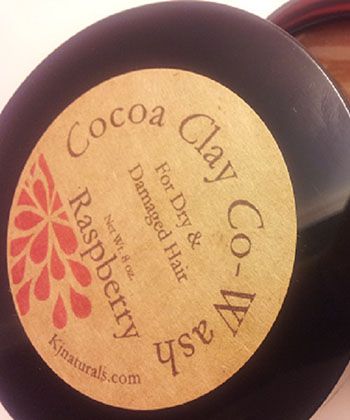


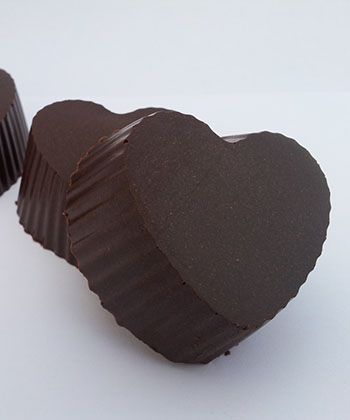










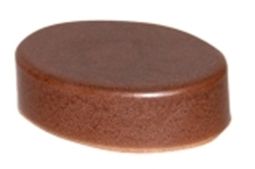


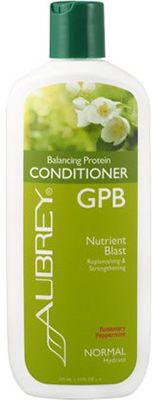


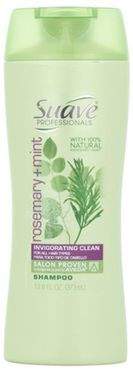
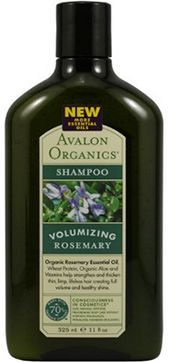

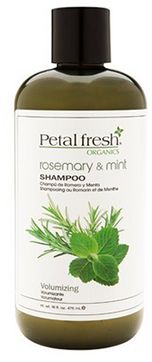








 DevaCurl Heaven in Hair
DevaCurl Heaven in Hair






